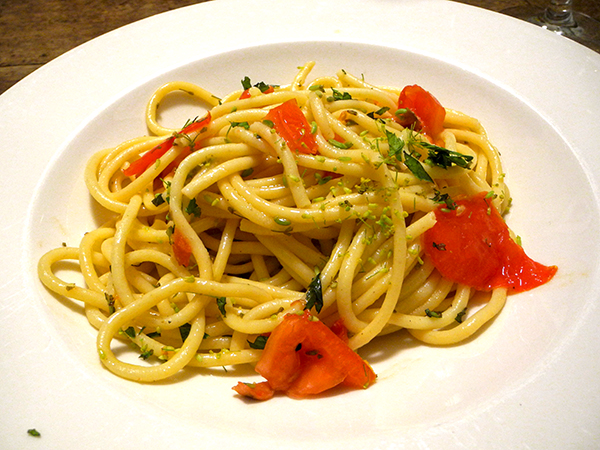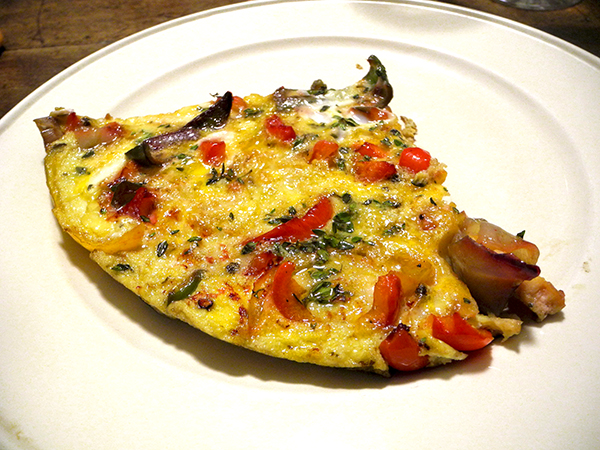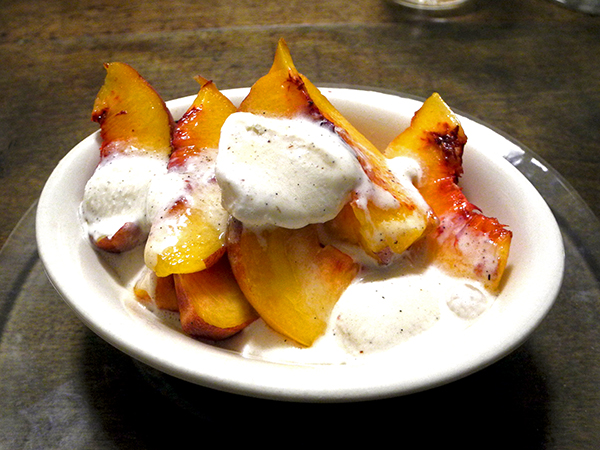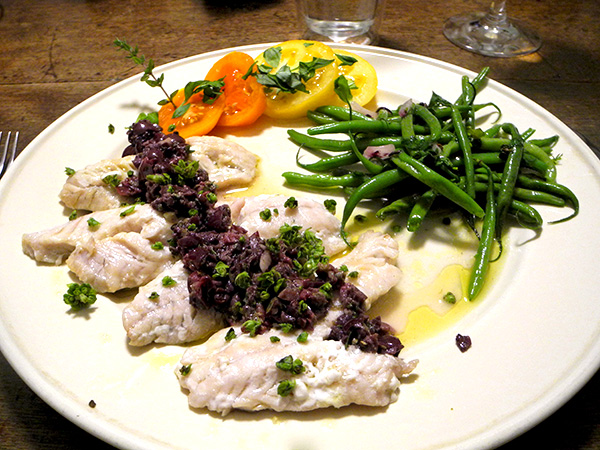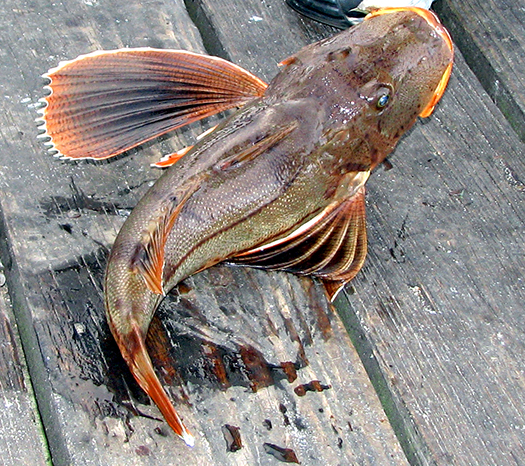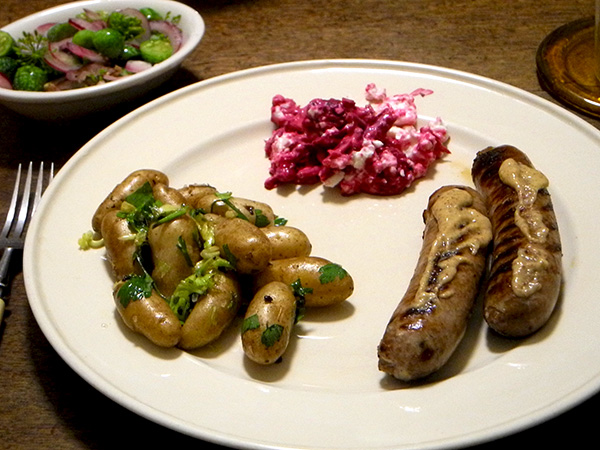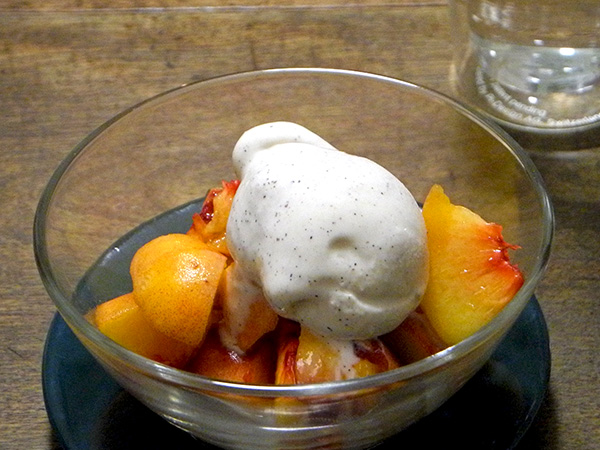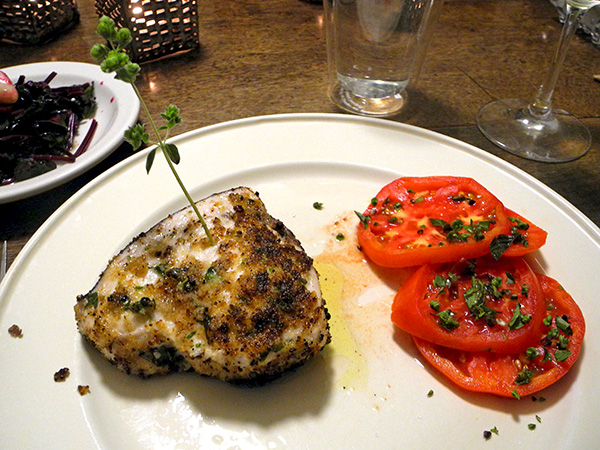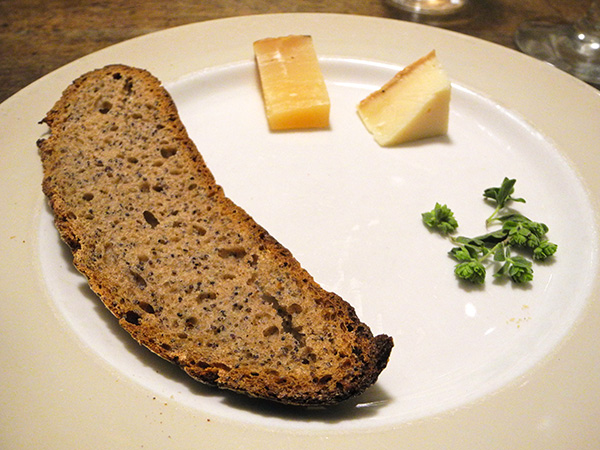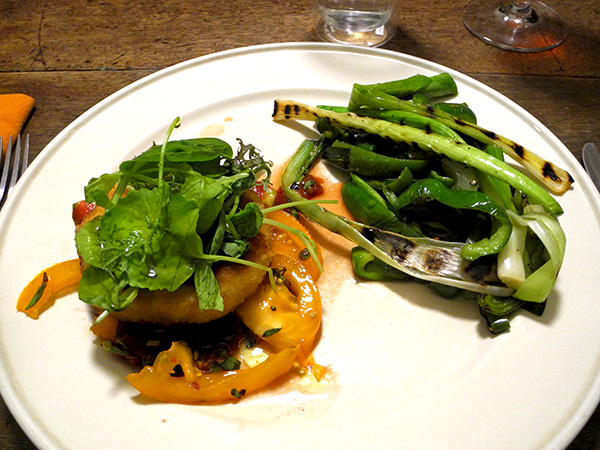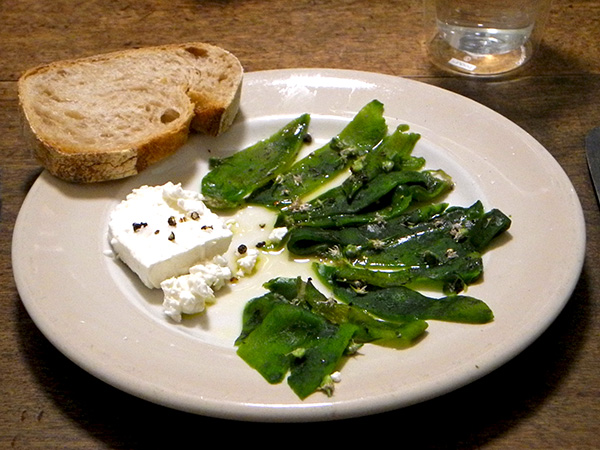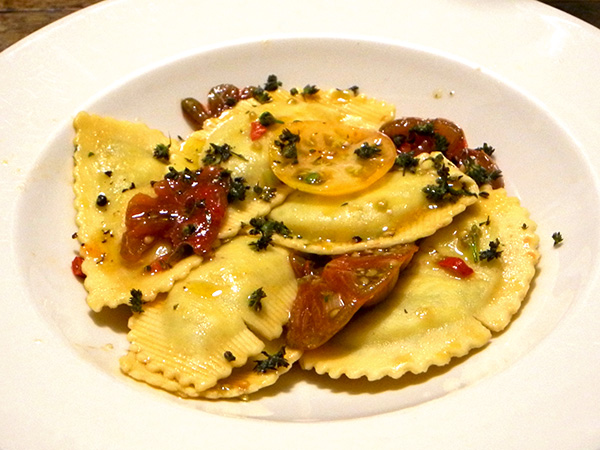I thought, if dry fennel seed is great on a tuna steak, why not fresh? And then I thought, maybe fresh fennel seeds would be spoiled with as much direct heat as I need to grill the surface, so I ended up sprinkling them over the steaks after they were grilled, and just before finishing them with a drizzle of olive oil. I now think I’ll try replacing dry for fresh altogether the next time I have them available.
- one 13-ounce tuna steak from Pura Vida Fisheries, rubbed with a mixture of fennel seed and one dried peperoncini, ground together, additionally seasoned with salt and pepper, then pan-grilled for only a minute or so on each side, finished with a good squeeze of lemon and sprinkling of fresh fennel seed from Lani’s farm and a drizzle of olive oil
- two Pozzano plum tomatoes from Norwich Meadows Farm, sliced in half, placed face down on a plate spread with salt and pepper, dried somewhat before placed on a hot grill pan, turned once, removed, finished with a bit of olive oil and balsamic vinegar
- a handful of Jamaican Burr Gherkins from Norwich Meadows Farm, sliced very thinly and tossed with small farmed ‘wild’ arugula from Eckerton Hill Farm along with ten or twelve husk cherries from Oak Hill Plantation, dressed with salt, pepper, good olive oil, and fresh lemon juice
- the wine was a New York Cabernet Franc rosé, Schneider & Bieler Rosé “le breton” 2014 from the Fingerlakes region
- the music was Vivaldi’s ‘Atenaide’, in a performance by Modo Antiquo, conducted by Federico Maria Sardelli

